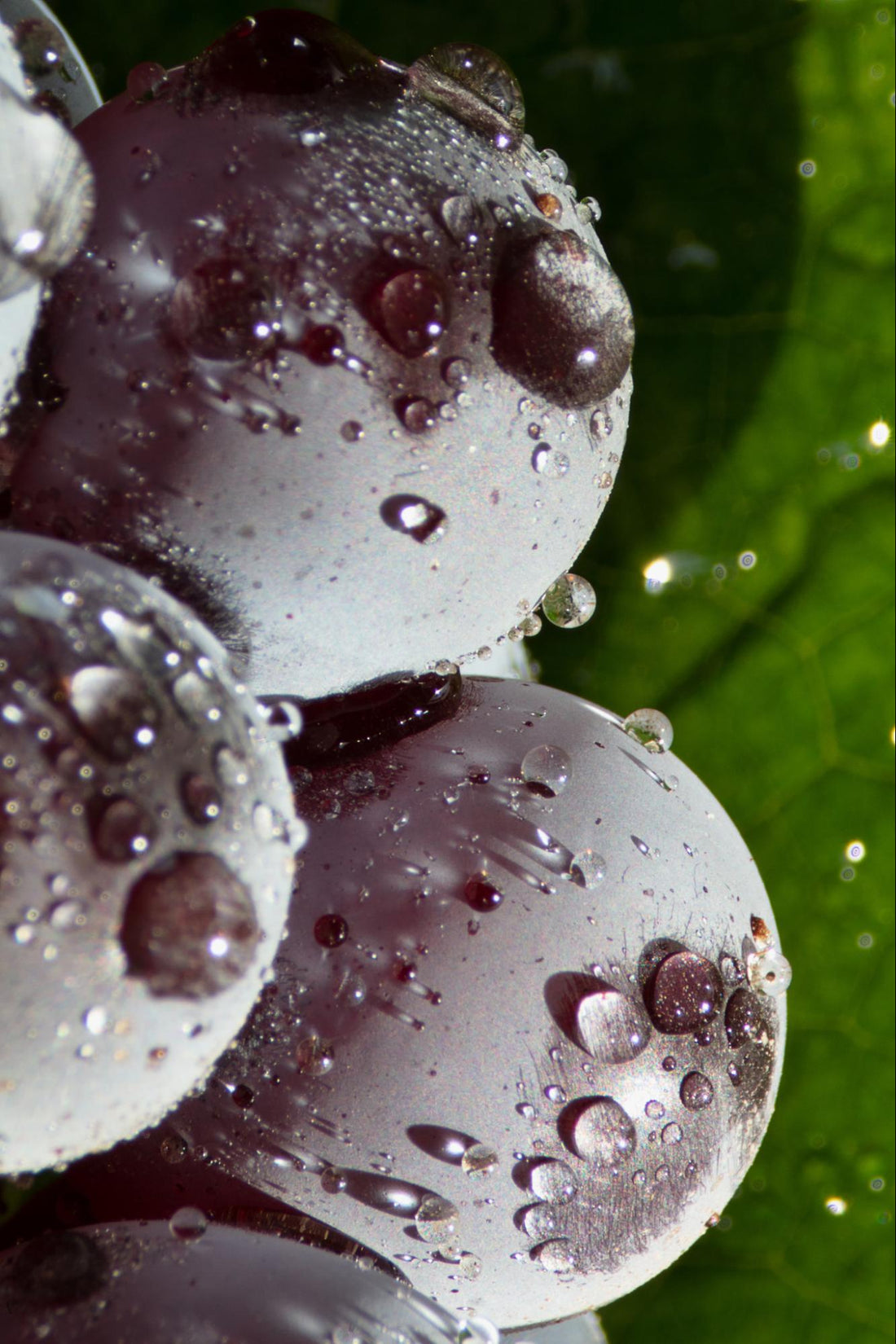
Wine History: Exploring Wine's History and Origins
McKenzie HaganWhether or not you're a history buff, you must admit there's something special about knowing the story behind what you eat, drink, wear, and use — and that includes wine. Thinking about how it all began can spur your imagination and help put things in perspective. Making the connection from the world's very first wine grape to your latest bottle of wine adds more dimension to the experience, and gives you a deeper appreciation and sense of enjoyment.
With that in mind, join us as we take a walk through the history of wine, including where it originated (hint: it's not France) and how various cultures have produced and used it over the years.
When and Where Did Winemaking Begin?
There's no doubt that France, Italy, and Spain are synonymous with winemaking and wine culture. But arguably it's France that lays claim to the world's most famed wine appellations (a.k.a. wine regions), including Bordeaux — the "wine capital of the world." France is also home to the most popular varietals and wines on the planet — think Cabernet Sauvignon, Merlot, Chardonnay, Champagne, Pinot Noir, and Sauvignon Blanc.
However, the history of wine doesn't begin with French wine (or Italian or Spanish wine). Archaeological records indicate that wine was first produced in China around 7000 B.C., followed by Armenia and Georgia, around 6100 to 6000 B.C., respectively.
In fact, researchers discovered the world's oldest winery (and world's oldest shoe!) in Armenia. There is also evidence of early winemaking in ancient Iran, Egypt, Israel, Greece, Cypress, and Sicily. Clearly, there's much more to wine than you may have thought.
Ancient World Wine vs. Old World Wine vs. New World Wine

When discussing the history of wine, it's helpful to understand a few phrases — specifically, "Ancient World" wines, "Old World" wines, and "New World" wines. More than anything, these wine terms refer to geography.
Ancient World Wine
As mentioned, today's most well-known wine regions are not where wine originated. These ancient wine areas — including China, Armenia, Iran, and Egypt — are where the world's first winemakers developed techniques for fermenting grape juice into alcohol.
Old World Wine
Old World wine comes from traditional wine regions across Europe, the Mediterranean, and Middle East, which is where viniculture (wine growing) really took off and developed. Old World wine production uses a common grapevine, known as Vitis vinifera. This grape is native to the Mediterranean region.
New World Wine
New World wine comes from just about any other region that isn't considered ancient or old. For instance, Australia, New Zealand, Argentina, Chile, South Africa, and Canada are New World wine regions. Of course, there's also the United States, with California, Oregon, and Washington being the most-well known wine-producing states.
Old World wine production also uses the Vitis vinifera wine grape, but different adaptations have been made to help it grow successfully in these varying climates.
History of Wine Timeline
Whether it was thousands of years ago or just a few days ago, the history of any type of wine begins its journey with the grapes being harvested, pressed, and fermented. The fermentation process is the most crucial part, as this is what turns pressed grapes (or grape juice) into wine.
Because there’s such a rich history of wine, there's no way we could detail every single location, discovery, or development. But we can share some of the greatest hits. Here's a quick breakdown of wine's worldwide travels and how various cultures have produced and consumed it over the centuries.
7000 B.C.
According to Dr. Patrick McGovern, the foremost wine scientist and anthropologist, the world's first chemically confirmed alcoholic beverage — including wine — was discovered at Jiahu in the Henan province of China.
Clay jars from this Early Neolithic Period were used to create and store a fermented drink made of wild grapes (including Vitis amurensis and Vitis thunbergii grape varieties), rice, honey, and hawthorn fruit. McGovern and his colleagues concluded that storing sugary fruit with yeast on its skins inside these vessels shows how the liquid was fermented.
It hasn't been confirmed whether the grapes were used by themselves or in combination with other fruit. Whatever the case, evidence suggests that these alcoholic beverages were used in burial and religious ceremonies.
6100 B.C.
In 2016, a group of researchers uncovered the oldest winery in the world in a cave, located in the mountains of Armenia. Among the discoveries in this cave was a drinking bowl and cup, grape press, and fermentation jars. It was also determined that the wine grapes used were Vitis vinifera, the same used in most wine today. As such, researchers deduce that the final product would probably be similar to an unfiltered red wine that tastes like Merlot.
While wine drinking started in China, this discovery is the earliest example of complete wine production. Experts say that the wine from Armenia was likely used for burial ceremonies, since that particular cave was once a significant cemetery site.
3100 B.C.
Ancient Egypt began making an early version of wine from red grapes. This ancient wine was stored in amphoras, which are clay jars with a narrow neck and two handles.
Although modern-day Egypt has very little wine production, its history is steeped in winemaking (and wine drinking). Scenes etched on ancient tomb walls show people harvesting grapes from the vine, squashing them, and placing them in amphoras to ferment.
Because red wine resembled blood, ancient Egyptians had many superstitions about its power, including its link to the blood of Osiris, the god of resurrection. Archaeological findings show that ancient wine was used in various ceremonies (including burials) as well as for medicinal purposes.
Although red wine was the most common type of wine produced in this region, amphoras discovered in Tutankhamun's tomb show the first evidence of white wine in Egypt.
1200 B.C.-539 B.C.
The Phoenicians are responsible for starting the wine trade, moving this increasingly popular beverage (and even grapevines themselves) across the Mediterranean, including Greece, Italy, and areas across modern-day Turkey, Lebanon, Israel, and Syria.
During their travels, the Phoenicians came into contact with Jewish people, who began using wine as part of religious ceremonies. In the Bible, the first mention of wine appears in the book of Genesis, when Noah drinks it after the Great Flood.
800 B.C.
Thanks to the Phoenicians, the ancient Greeks began drinking wine and using it as a symbol for religion, trade, and health. Wine was so beloved in Ancient Greece that they even named a god after it: Dionysus. Wicker baskets were filled with harvested grapes, then crushed before placing them in pithoi — large earthenware jars similar to the Egyptian amphoras. These jars are where fermentation took place.
As the Greek city-states began to spread throughout the Mediterranean, so too did wine production. Like the Phoenicians, Greeks would transport grapevines. They introduced the Vitis vinifera wine grape to new colonized areas, including Sicily, before eventually making their way to Rome.
200 B.C.-100 B.C.

Mimicking the Greeks, the Romans created their own god of wine: Bacchus. (It's where we get the word "bacchanalian," meaning drunken revelry.)
The Romans fine-tuned the Greek's process of viniculture, using barrels and other techniques that helped them produce more at a quicker pace and lower cost. For example, Roman wine production included using a torculum (wine press) to crush the grapes and separating the grape juice from the skins with a colander-like object. The juice was sometimes boiled before fermenting in amphoras that were buried in the sand, dirt, or even water.
Wine was part of daily life for Romans, so unlike the pharaohs of Egypt, this "drink of the gods" was easily accessible for rich and poor alike. That said, a wide variety of lower-quality wines were what the masses drank — mustum (mixed with vinegar), mulsum (sweetened with honey), and lora (bitter wine made from leftover grape components after pressing), to name a few.
As the Roman empire grew across Europe, they planted grapevines in European countries including modern-day France, Italy, Spain, Germany, and Portugal.
A.D. 306-380
Beginning with the reign of Constantine the Great (A.D. 306-337), the Catholic Church and Christianity became the primary religious force in the Roman Empire. And with it, wine took a prominent place in religious rituals, specifically during the sacrament of Eucharist (also known as communion). In Catholic mass, this custom commemorates the last supper of Jesus Christ and his apostles, with the wine symbolizing the blood of Jesus.
The practice of using wine — or at least the symbolism of wine — is still very much a part of many churches across the Christian faith. (Although grape juice is a common substitute.) It's yet another example of the enduring influence that wine has had on humankind not only for social pleasure, but for spiritual practice.
1492-1600s
We all know the familiar refrain: "In 1492, Columbus sailed the ocean blue." When Christopher Columbus first set sail from Spain on one of four expeditions, he and his crew stumbled upon the Americas. While his "discovery" of the New World was anything but, it did mark the beginning of a new era of exploration (and colonization) of North and South America.
In the 16th century, transatlantic trips saw Spanish conquistadors invading Mexico and Brazil, bringing with them European grape cultivation. During this time, wine production spread widely across South America.
Spanish missionaries established the first winery in Chile (not surprising since wine was a mainstay of the Catholic Church by then). These missionaries also traveled to Argentina where they settled in the Mendoza wine region and planted the region’s first wine varietals.
1769-1830s
In the late 18th century, Spanish missionary Junipero Serra traveled to San Diego, California, where he established the state's first mission and first known vineyard. As the friar and his fellow monks developed missions up and down the state, they continued to plant the Mission grape, a varietal of Vitis vinifera from Spain.
Four types of wine were made from this grape: a sweet white wine that fermented the juice without the skins; a dry and sweet red wine made by fermenting the juice with the skins on; and a sweet fortified wine.
The Spanish colonizers established Sonoma’s first winery in 1805 and the Mission grape was the only varietal grown in California until the 1830s. After that, other European settlers in Los Angeles added several European grape varieties to their vineyards.
1830s
In the early 19th century, Scottish-born, British-raised, and Australian-based viticulturist and writer James Busby triggered the dawn of a new era for wine growing in the geographic region of Oceania. After much research and cross-continental travel between Australia and Europe, he took grapevine cuttings from Europe and planted vineyards in Australia.
Eventually, he took some of these cuttings from Australia to New Zealand, and in 1836, he established New Zealand’s first vineyard. Nearly 200 years later, descendants of his original cuttings are still thriving in vineyards throughout Australia and New Zealand. It's no wonder he's considered the father of the Australian wine industry.
1980s to Today
In a full circle moment, we'll conclude our walk through the history of wine back where we started: in China. As the Chinese economy started to boom in the late 1980s, the nation grew into one of the world's largest consumers and producers of wine. While rice wine remains the most popular alcoholic beverage in the country — harkening back to its ancient roots — grape wine has grown in status and preference.
However, overall wine production in China has dropped significantly in recent years. There's no clear reason why this is happening, but some experts suggest the downturn might be due to unfavorable growing conditions, waning interest in locally produced wine, and the influx of imports from better-known wine regions.
No matter how this story continues, it's clear that wine is here to stay. In fact, the only continent on the planet where vineyards do not exist is Antarctica.
Your Wine Has a Story
Knowing how various cultures have produced and used wine over the years can enhance your wine drinking experience. From the first winery hidden in Armenia to the Phoenicians’ worldwide influence of winemaking to the social and spiritual aspects of wine in Greco-Roman culture and beyond, wine is much more than just fermented grapes in a glass. It's a lesson in history that you can savor every time you take a sip.
For even more captivating facts on the wonders of wine, be sure to check out the Usual Wines blog.








